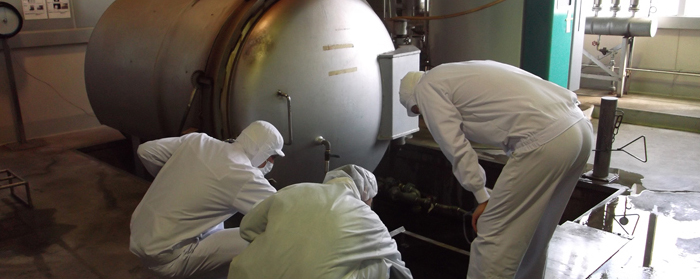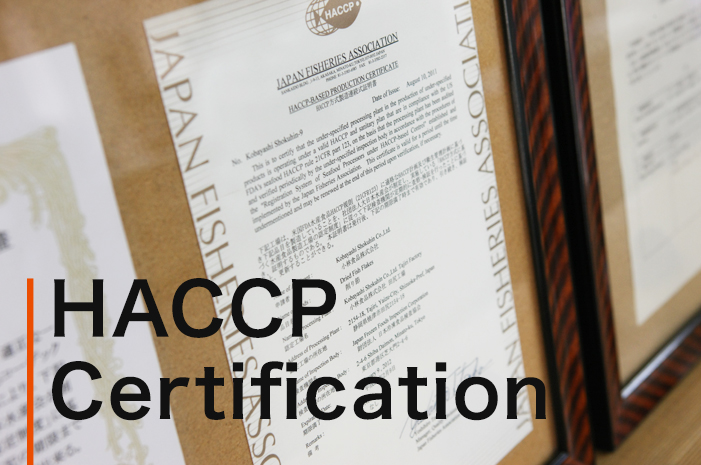
\Promise2/①Building a management system as a HACCP factory.
The HACCP system is a method of food safety management adopted worldwide including Western countries. We received HACCP certification in August 2007 for our Tajiri Factory Flaking Department. Since then, we have built a management system as a HACCP factory and have undergone continuous review, passing temporary review once every six months and the main review once every two years. We have also spread similar management systems to other departments and factories, keeping various record lists and conducting the Japanese 5S method. We endeavor to operate factories where customers can feel safe using our products.
- HACCP certification: Kobayashi Foods Co., Ltd.
- Accreditation organization: Japan Fisheries Association
- Inspection organization: Japan Frozen Foods Inspection Corporation
What is HACCP?
HACCP is short for Hazard Analysis and Critical Control Points. HACCP is a method of quality control of foods which was originally developed in the United Stated in the 1960s to ensure safety of space food. In 1973, the US Food and Drug Administration (FDA) introduced it in law regulation of low-acid canned foods, and in 1997, in law regulation of fish and shellfish. It is a principle that ensures the safe manufacture and import of foods.
This method is used to determine in which part of the food manufacturing process hazards are likely to occur, and to monitor and control the manufacturing process so that these hazards do not occur, ensuring the safety of foods that food manufacturers produce.
Hazard Analysis
Analyzing the potential hazards in each process of food manufacturing (from receipt of raw materials, manufacturing, to shipment).
Critical Control Point
Determining how to manage the hazards identified through Hazard Analysis, identifying the most critical process, and keeping records.
Simply put, it is a system that says, “If you determine the method to prevent hazards in advance and keep to the method everyday, food will be safely manufactured.” It is a system that allows you to control hazards “from raw material to customer,” thus ensuring the safety of the product, which was not possible with conventional quality control methods such as sample inspection.
At the Head Office Factory of Kobayashi Foods, we use this HACCP system in the production of dried bonito flakes to ensure the product’s safety.
A HACCP scheme has seven principles.
1. Conduct Hazard Analysis
2. Identify Critical Control Points (CCP)
3. Determine the method and standard to control CCPs
4. Monitor the most critical point
5. Determine the action to be taken when results do not meet standards
6. Determine the method of inspection
7. Record, store, and document
When building the HACCP system, we applied a survey called Hazard Analysis Worksheet, and, based on the above seven principles, we conducted Hazard Analysis on every process from receipt of the raw material, processing of the raw material, processing of the dried bonito flakes, to packing. Then, we identified the Critical Control Points.
To be more specific, there is a sterilization process of the raw material “fushi,” and when there is a problem with the sterilization condition, there is the risk of pathogenic germs surviving, so we identified the steaming process as a CCP. Therefore, we keep records of the temperature and time of the steaming process and conduct regular inspection.
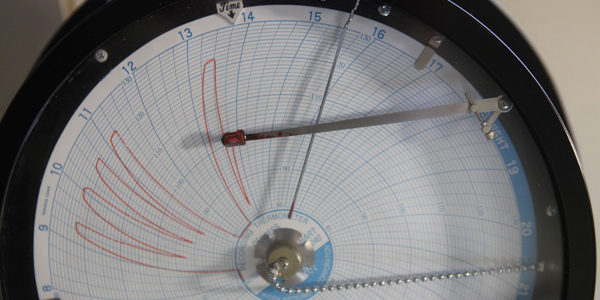
Moreover, in the flaking process, we cut the dried bonito using a machine, so there is the risk of the blade coming apart. Therefore, we identified the metal detector process as a CCP, keeping records and conducting inspections.
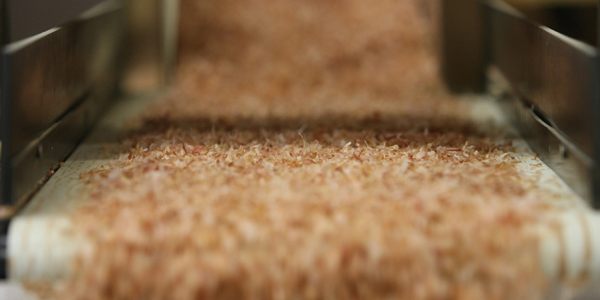 Product going through the metal detector
Product going through the metal detector
In our industry, it is the norm to receive HACCP certification for a single item, but we received HACCP certification for a whole manufacture line.
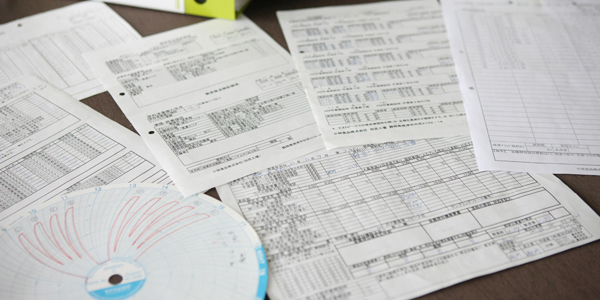 Various types of record lists
Various types of record lists
\Promise2/②Hygiene Management System
We endeavor to create an environment where customers can feel safe using our products.
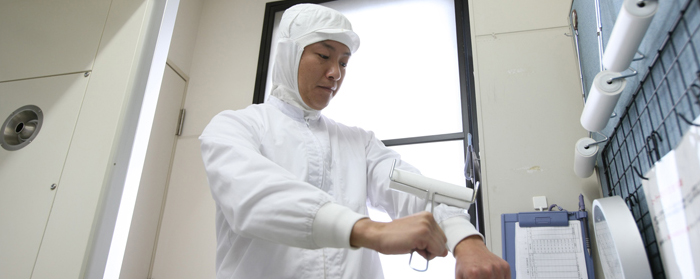
\Promise2/③Employee education
We conduct employee education when employees enter the company, and then on a regularly basis, going over rules, teaching the importance of hygiene and the possibility of contamination, aiming to improve the competence of the manufacturing staff.
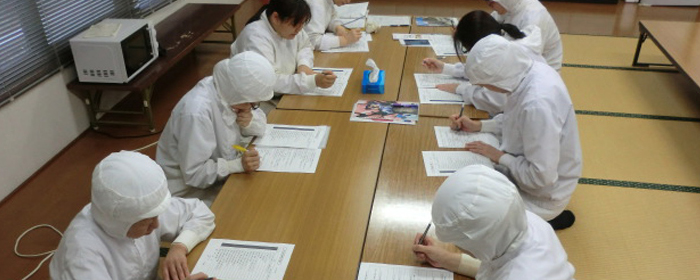
\Promise2/④In-house factory inspection
Once every two months, we conduct an inspection at each factory. These in-house inspections are conducted under strict standards, and problems identified are to be resolved immediately.
